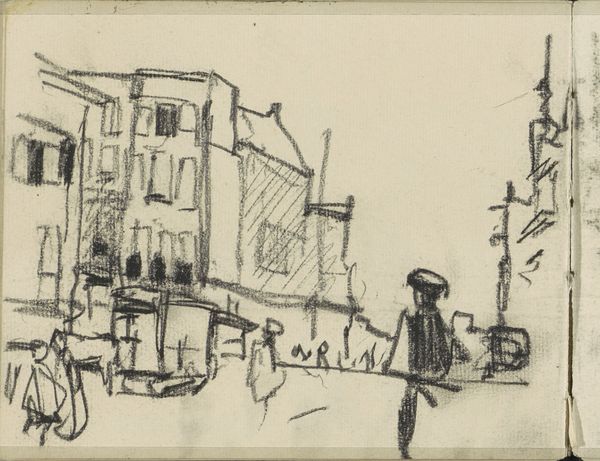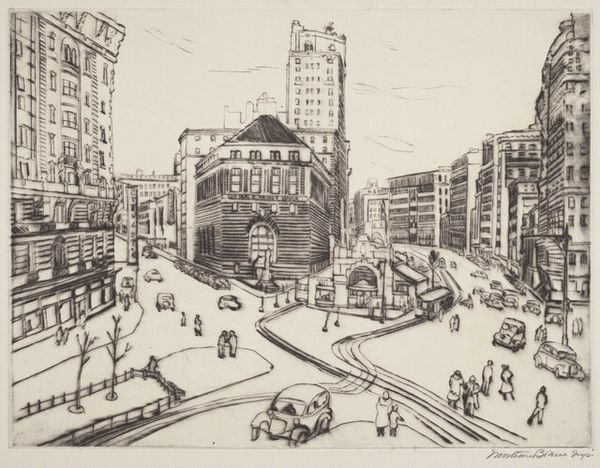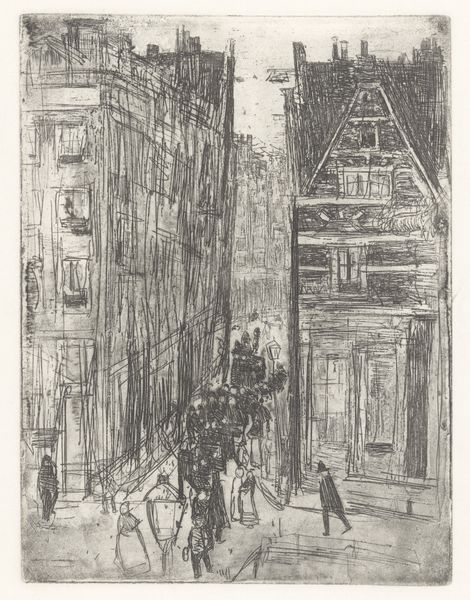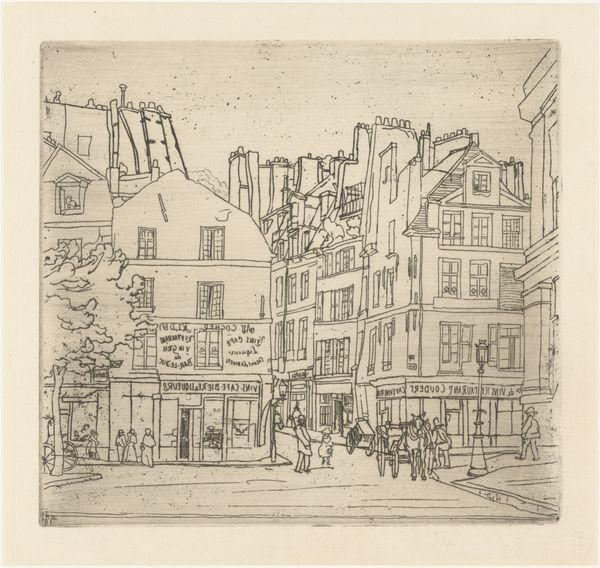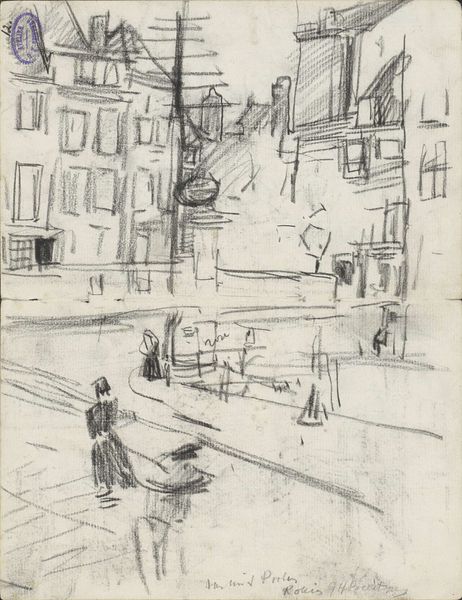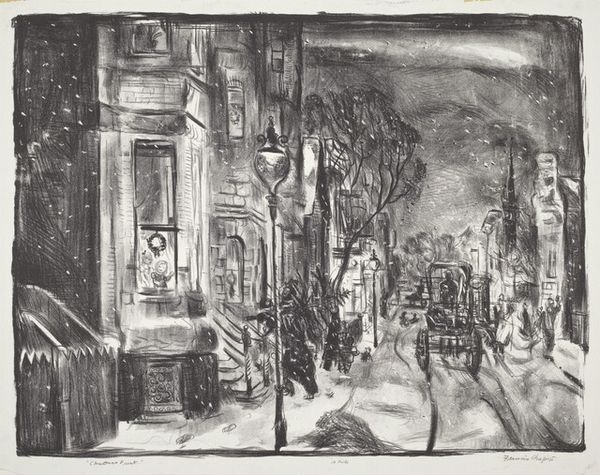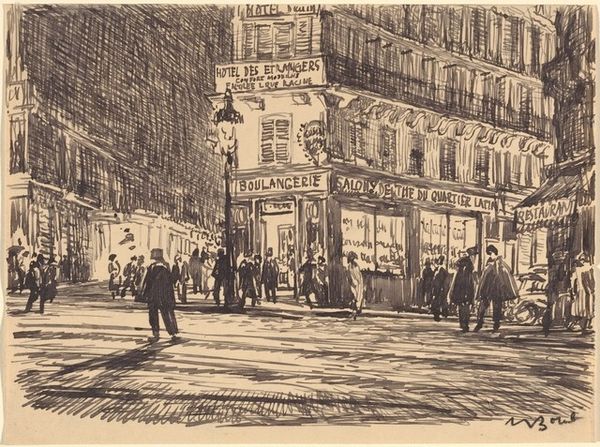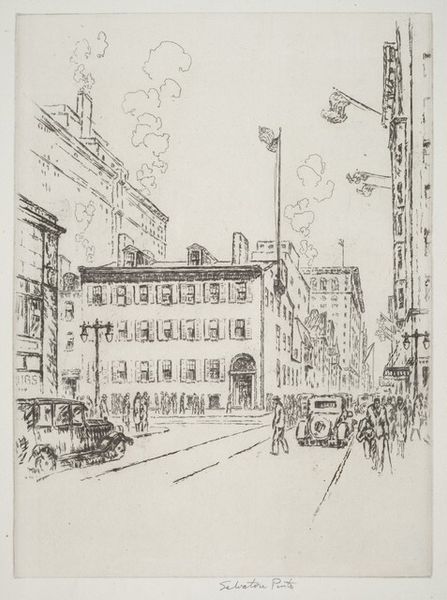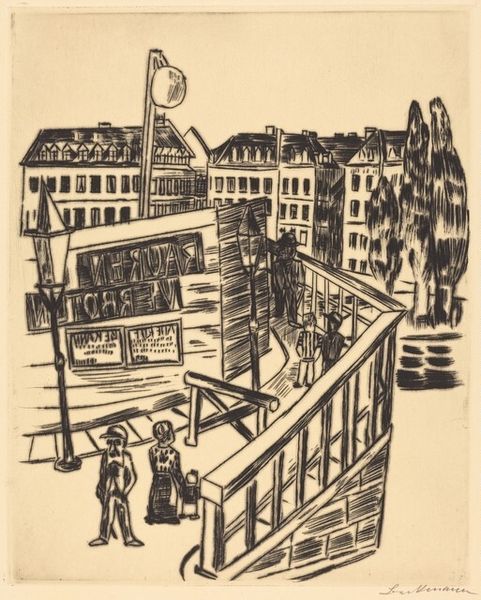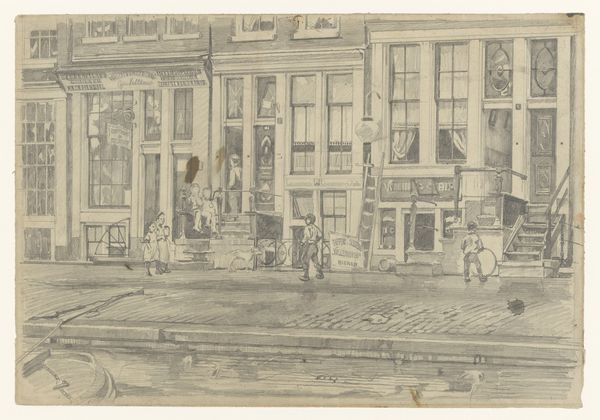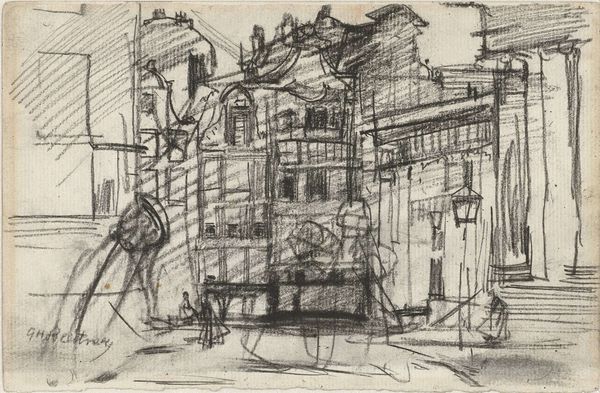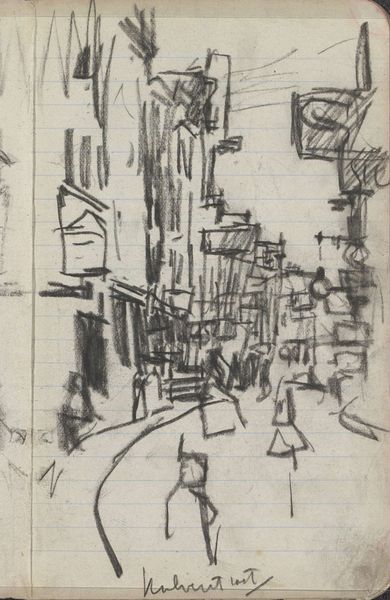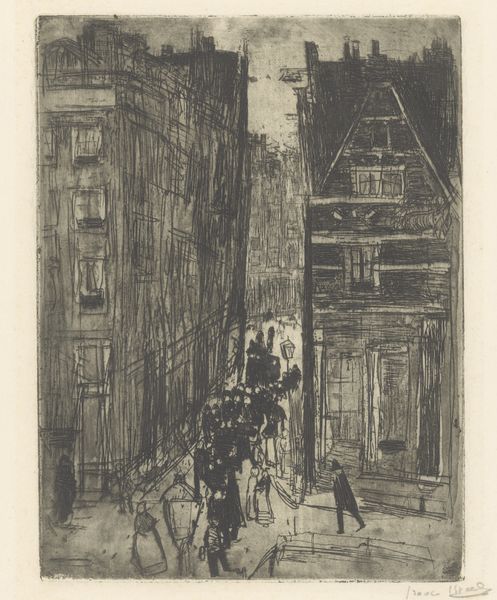
drawing, ink
#
drawing
#
ink drawing
#
pen sketch
#
ink
#
geometric
#
cityscape
#
modernism
Dimensions: 169 mm (height) x 207 mm (width) (bladmaal)
Editor: We’re looking at "Linie 16 (sporvognen) kører om hjørnet," or "Line 16 (the tram) turns the corner," an ink drawing by John Christensen from 1936. It's a bustling cityscape scene, rendered with rapid, almost frenetic lines. It gives me a sense of hurried movement, of the city's pulse. What stands out to you in terms of its formal qualities? Curator: The dynamism you perceive arises directly from the artist's exploitation of line. Note the prevalence of hatching and cross-hatching – techniques employed not merely to define form but to create tonal variations and a sense of spatial recession. Consider how the varying densities of line suggest areas of shadow and light, informing our perception of the buildings' depth and the tram's volume. Does the geometric stylization strike you? Editor: Yes, the geometric elements are definitely there. I notice that the figures and buildings are somewhat simplified, almost abstracted into their basic shapes. I mean, does this reduction of form contribute to a specific aesthetic or perhaps convey a deeper meaning about urban life in the modernist period? Curator: Precisely. Abstraction, even in a representational work, foregrounds the formal relationships within the composition. Look closely at the relationship between the angularity of the buildings and the curved forms of the tram. It's not simply a depiction; it’s a play of contrasting forms. Further, the lack of fine detail encourages the viewer to engage with the artwork intellectually, prompting a consideration of the underlying structure of the urban environment itself. How do you interpret the dominance of line over other elements? Editor: I see. It is all about line and structure. By de-emphasizing detail, Christensen directs our focus toward the underlying framework of the city and the rapid pace of modern life. This has really shifted my understanding – I was caught up in the apparent chaos, but now I appreciate the deliberate composition. Curator: Indeed. It’s a potent example of how formal analysis reveals deeper artistic intent.
Comments
No comments
Be the first to comment and join the conversation on the ultimate creative platform.
